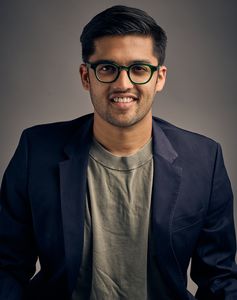On October 30, 2022, Anamta Ahmed, a 13-year-old Mumbai girl, travelled with her family to her relatives’ home in Aligarh for Diwali. Ahmed was always fascinated by terraces, not being able to enjoy them much in Mumbai. “That day, I was enjoying the view from the terrace with my cousins, feeling happy and carefree. While I was standing near the terrace railing, something unexpected happened,” she says.
Ahmed accidentally touched an 11KV wire passing by the terrace, resulting in severe electric shock. “Suddenly, I lost my vision, my body started shaking, and I heard a strange sound resonating through me. It was terrifying―I fainted and was rushed to a local hospital in Aligarh,” she recalls. Ahmed’s right hand developed gangrene; her left arm was also severely injured with poor function.
At the hospital, Ahmed heard the shocking news―her right hand would need to be amputated. Seeking a second opinion, her family took her to a top private hospital in Delhi. But the doctors there confirmed the diagnosis. Left with no option, she was airlifted to Mumbai and admitted at the National Burn Centre. And there she underwent amputation.
Post-amputation, Ahmed found the strength to rebuild her life. She remained optimistic, resuming school without delay and tackling daily challenges by herself. Determined, she learned to write with her left hand and scored 92 per cent in her Class 10 exams. Meanwhile, her family explored options, eventually zeroing in on hand transplant. And, in October 2024, she became the youngest recipient in Asia to successfully undergo a shoulder-level limb transplant at Gleneagles Hospital in Parel, Mumbai.
Orthotic devices play a crucial role in the rehabilitation and functional restoration process after a hand transplant. They provide stability and protection during healing, and prevent contractures. They also ensure proper alignment and support controlled rehabilitation movements. And, for Ahmed’s fast and comfortable recovery process, a startup, Imaginarium, offered to design a custom-made, biocompatible 3D-printed orthotic device.
“After the surgery, I initially wore a pouch,” says Ahmed. “But it made my hand sweaty, as it was enclosed. However, Imaginarium offered a brace that is open, with holes for ventilation, with the material being very comfortable for my skin.”
While speaking to THE WEEK, Aashay Mehta, managing director of Imaginarium, described his firm as an advanced manufacturing company that, in the past year, has placed 3D-printed parts in space, in human bodies, in oil fields in the Middle East, and as drones on the Indian border.
Talking about the role of 3D printing in health care, Mehta says that mass customisation is the core strength of 3D printing. “And what requires more customisation than the human body? My right and left hands aren't mirror images of each other,” he says. According to the entrepreneur, health care today is being revolutionised by customised devices, whether it's a surgical guide, implant, orthotic, or prosthetic. “Anything tailored to my anatomy is far superior to anything off the shelf,” he says. “From a surgical guide that speeds up procedures to an implant that fits perfectly or a prosthetic that feels seamless―customisation makes all the difference.”
Mehta explains that Ahmed’s case was unique due to the hand transplant and the lack of sensation in her hand. “Traditional methods posed the risk of injury, especially during casting,” he says. “The use of fibreglass could damage her sensitive skin.”
The biggest hurdle, however, was time. “Post-transplant, she urgently required a device, and waiting days or weeks was not an option,” he says. “By leveraging 3D printing, we were able to scan her hand and create a custom solution designed for her specific anatomy. Our ability to work efficiently and at scale enabled us to deliver the device swiftly.”
Mehta says that his firm uses Class VI biocompatible materials which is supported by state-of-the-art facilities, software, and processes. Extensive testing was done on these materials before they were considered for use on the human body, he claims.
Imaginarium’s custom-made products are not substantially more expensive than conventionally available alternatives, says Mehta. “And, comparing like with like―a custom device made through traditional methods versus one produced via 3D printing―the latter is already cost-effective. Traditional manufacturing of custom devices can take days or weeks, while 3D printing achieves this within hours or a day, offering a strong value proposition in terms of time saved,” he says. “Additionally, traditional methods rely heavily on human skill and craftsmanship, making outcomes variable and prone to error. With 3D printing, this art is transformed into science, ensuring consistency and precision.”
What Ahmed admires the most about the brace is how stylish it looks. “The brace is designed to keep my hand in an ideal position while offering customisation options to make it funky and Gen Z-friendly,” she says. “It is stylish, pairs well with outfits, and, most important, is incredibly comfortable.”
Mehta says that Imaginarium took less than a day to design Ahmed’s brace. His firm is also integrating AI and machine learning tools to automate the designing and manufacturing process to reduce the time required for creating custom-made health care products. “As for health care advancements, 3D printing offers endless possibilities, and we’re actively exploring diverse applications to maximise its potential,” he says.



